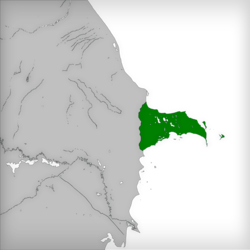Centrocaspian Dictatorship
This article needs additional citations for verification. (September 2011) |
Central-Caspian Dictatorship Centro-Caspian Dictatorship | |||||||||
|---|---|---|---|---|---|---|---|---|---|
| 1918 | |||||||||
|
Flag | |||||||||
 Area controlled by the Centrocaspian Dictatorship in August 1918 | |||||||||
| Capital | Baku | ||||||||
| Common languages | Russian Azerbaijani | ||||||||
| Government | Military dictatorship | ||||||||
| Historical era | World War I | ||||||||
• July 26 Baku Coup d'état | 26 July 1918 | ||||||||
| 26 August 1918 | |||||||||
• Liberation of Baku | 15 September 1918 | ||||||||
| 30 October 1918 | |||||||||
| |||||||||
| Today part of | Azerbaijan | ||||||||
| History of Azerbaijan | |
|---|---|
 | |
| c.700 BC–c.590s BC | |
| Achaemenid Empire | 550 BC–330 BC |
| • Satrapy of Media | c.550 BC – 323 BC |
| Seleucid Empire | 312 BC – 63 BC |
| Parthian Empire | 247 BC – AD 224 |
| Caucasian Albania | c.200 BC – c.AD 800 |
| Roman Empire | 27 BC – AD 395 |

